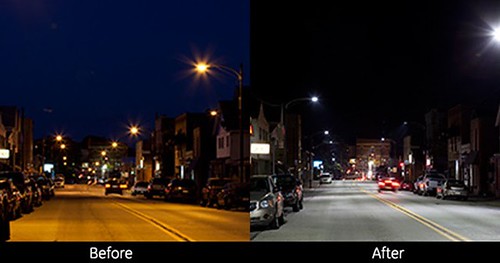Idized with 32P labeled probe amplified from CMV promoter. (B) MedChemExpress CASIN genomic DNA extracted from tail tips of transgenic sheep was double-digested with SfiI/HpaI and hybridized with 32P labeled probe. NTC, non-transgenic sheep control; # 4?14, transgenic lambs 22948146 identified by PCR corresponding to Fig. 1A. (C) pLEX-EGFP plasmid was double-digested with SfiI/HpaI and diluted in serial concentrations matched to corresponding copies. Diluted plasmids with copies from 1 to 5 were hybridized with probe double-digested genomic DNA of transgenic lamb in parallel. (D) Standard curve of copy numbers in panel C was generated with diluted plasmid based on the quantification of the blots by densitometric measurement as described in the Materials and Method. doi:10.1371/journal.pone.0054614.gGeneration of Transgenic Sheep by LentivirusTable 1. Southern blot analysis of transgene copy numbers determined by standard curve with a double-digested genomic DNA sample.Transgenic Sheep Intensity Copy Numbers#4 931 1.#5 1949 4.#6 1362 3.#7 952 1.#8 982 2.#9 1013 2.#12 2222 5.#14 1442 3.doi:10.1371/journal.pone.0054614.tnylon membrane (Amershan) in 106SSC for 90 min. The 430 bp fragment of the CMV promoter  was amplified as probe from pLEX-EGFP plasmid using primers: forward 59-CGAGGGCGATGCCACCTAC-39 and reverse 59-CTCCAGCAGGACCATGTGATC-39. The probe was prepared by 32P-dCTP labeling with random primer extension kit (Promega) and hybridized with blotting membrane by incubating overnight at 65uC in 34540-22-2 site hybridization oven (Hoefer Scientific Instrument). The concentration of probe used for hybridization was 25 ng/mL. Membranes were washed three times at 65uC in 0.56SSC buffer containing 1 SDS after hybridization and exposed against film in dark cassette at 280uC for 24 hours. Then the film was developed as general protocol.To verify the integrant numbers observed in one-cut genomic DNA, the southern blot with double-digested genomic DNA was performed along with the standard curve which was generated by serial dilution of double-digested transgenic plasmid in parallel. For short, the plasmid was
was amplified as probe from pLEX-EGFP plasmid using primers: forward 59-CGAGGGCGATGCCACCTAC-39 and reverse 59-CTCCAGCAGGACCATGTGATC-39. The probe was prepared by 32P-dCTP labeling with random primer extension kit (Promega) and hybridized with blotting membrane by incubating overnight at 65uC in 34540-22-2 site hybridization oven (Hoefer Scientific Instrument). The concentration of probe used for hybridization was 25 ng/mL. Membranes were washed three times at 65uC in 0.56SSC buffer containing 1 SDS after hybridization and exposed against film in dark cassette at 280uC for 24 hours. Then the film was developed as general protocol.To verify the integrant numbers observed in one-cut genomic DNA, the southern blot with double-digested genomic DNA was performed along with the standard curve which was generated by serial dilution of double-digested transgenic plasmid in parallel. For short, the plasmid was  serially diluted from 120 pg (5 copies) to 24 pg (one copy). Each concentration of standard plasmid was converted into copy numbers per volume using the following {9 equation: N = C|10 |6:02|1023 , where N stands for copy M|660 number (copies/mL), C for concentration (ng/mL) and M for base pairs of the plasmid. Further, the integrants identified by counting the bands in single-digested genomic DNA southern blot was matched to the copy numbers determined in double-cut genomic DNA southern blot by quantification with standard curve.Figure 3. Analysis of the expression of GFP in transgenic lambs. (A) Embryos injected with lentivirus were cultured and developed to blastula and visualized by white and UV light (left panels) under microscope with magnification of 2006. Visualization of GFP expression in transgenic lambs (#1,#3,#7) and non-transgenic lamb control (NTC) were pictured under white light and UV light (middle panels). Visualization of GFP expression of horn in 1.5 year old transgenic lamb #7 and non-transgenic lamb pictured under white light and UV light (right panels). Arrows indicated the green fluorescence in transgenic sheep; (B) Proteins extracted from tail tips of eight transgenic lambs were subjected to immunoblotting with GFP antibody as described in Materials and Methods. b-actin levels were determined with an anti-b-actin antibody and used as loading control. doi:10.1371.Idized with 32P labeled probe amplified from CMV promoter. (B) Genomic DNA extracted from tail tips of transgenic sheep was double-digested with SfiI/HpaI and hybridized with 32P labeled probe. NTC, non-transgenic sheep control; # 4?14, transgenic lambs 22948146 identified by PCR corresponding to Fig. 1A. (C) pLEX-EGFP plasmid was double-digested with SfiI/HpaI and diluted in serial concentrations matched to corresponding copies. Diluted plasmids with copies from 1 to 5 were hybridized with probe double-digested genomic DNA of transgenic lamb in parallel. (D) Standard curve of copy numbers in panel C was generated with diluted plasmid based on the quantification of the blots by densitometric measurement as described in the Materials and Method. doi:10.1371/journal.pone.0054614.gGeneration of Transgenic Sheep by LentivirusTable 1. Southern blot analysis of transgene copy numbers determined by standard curve with a double-digested genomic DNA sample.Transgenic Sheep Intensity Copy Numbers#4 931 1.#5 1949 4.#6 1362 3.#7 952 1.#8 982 2.#9 1013 2.#12 2222 5.#14 1442 3.doi:10.1371/journal.pone.0054614.tnylon membrane (Amershan) in 106SSC for 90 min. The 430 bp fragment of the CMV promoter was amplified as probe from pLEX-EGFP plasmid using primers: forward 59-CGAGGGCGATGCCACCTAC-39 and reverse 59-CTCCAGCAGGACCATGTGATC-39. The probe was prepared by 32P-dCTP labeling with random primer extension kit (Promega) and hybridized with blotting membrane by incubating overnight at 65uC in hybridization oven (Hoefer Scientific Instrument). The concentration of probe used for hybridization was 25 ng/mL. Membranes were washed three times at 65uC in 0.56SSC buffer containing 1 SDS after hybridization and exposed against film in dark cassette at 280uC for 24 hours. Then the film was developed as general protocol.To verify the integrant numbers observed in one-cut genomic DNA, the southern blot with double-digested genomic DNA was performed along with the standard curve which was generated by serial dilution of double-digested transgenic plasmid in parallel. For short, the plasmid was serially diluted from 120 pg (5 copies) to 24 pg (one copy). Each concentration of standard plasmid was converted into copy numbers per volume using the following {9 equation: N = C|10 |6:02|1023 , where N stands for copy M|660 number (copies/mL), C for concentration (ng/mL) and M for base pairs of the plasmid. Further, the integrants identified by counting the bands in single-digested genomic DNA southern blot was matched to the copy numbers determined in double-cut genomic DNA southern blot by quantification with standard curve.Figure 3. Analysis of the expression of GFP in transgenic lambs. (A) Embryos injected with lentivirus were cultured and developed to blastula and visualized by white and UV light (left panels) under microscope with magnification of 2006. Visualization of GFP expression in transgenic lambs (#1,#3,#7) and non-transgenic lamb control (NTC) were pictured under white light and UV light (middle panels). Visualization of GFP expression of horn in 1.5 year old transgenic lamb #7 and non-transgenic lamb pictured under white light and UV light (right panels). Arrows indicated the green fluorescence in transgenic sheep; (B) Proteins extracted from tail tips of eight transgenic lambs were subjected to immunoblotting with GFP antibody as described in Materials and Methods. b-actin levels were determined with an anti-b-actin antibody and used as loading control. doi:10.1371.
serially diluted from 120 pg (5 copies) to 24 pg (one copy). Each concentration of standard plasmid was converted into copy numbers per volume using the following {9 equation: N = C|10 |6:02|1023 , where N stands for copy M|660 number (copies/mL), C for concentration (ng/mL) and M for base pairs of the plasmid. Further, the integrants identified by counting the bands in single-digested genomic DNA southern blot was matched to the copy numbers determined in double-cut genomic DNA southern blot by quantification with standard curve.Figure 3. Analysis of the expression of GFP in transgenic lambs. (A) Embryos injected with lentivirus were cultured and developed to blastula and visualized by white and UV light (left panels) under microscope with magnification of 2006. Visualization of GFP expression in transgenic lambs (#1,#3,#7) and non-transgenic lamb control (NTC) were pictured under white light and UV light (middle panels). Visualization of GFP expression of horn in 1.5 year old transgenic lamb #7 and non-transgenic lamb pictured under white light and UV light (right panels). Arrows indicated the green fluorescence in transgenic sheep; (B) Proteins extracted from tail tips of eight transgenic lambs were subjected to immunoblotting with GFP antibody as described in Materials and Methods. b-actin levels were determined with an anti-b-actin antibody and used as loading control. doi:10.1371.Idized with 32P labeled probe amplified from CMV promoter. (B) Genomic DNA extracted from tail tips of transgenic sheep was double-digested with SfiI/HpaI and hybridized with 32P labeled probe. NTC, non-transgenic sheep control; # 4?14, transgenic lambs 22948146 identified by PCR corresponding to Fig. 1A. (C) pLEX-EGFP plasmid was double-digested with SfiI/HpaI and diluted in serial concentrations matched to corresponding copies. Diluted plasmids with copies from 1 to 5 were hybridized with probe double-digested genomic DNA of transgenic lamb in parallel. (D) Standard curve of copy numbers in panel C was generated with diluted plasmid based on the quantification of the blots by densitometric measurement as described in the Materials and Method. doi:10.1371/journal.pone.0054614.gGeneration of Transgenic Sheep by LentivirusTable 1. Southern blot analysis of transgene copy numbers determined by standard curve with a double-digested genomic DNA sample.Transgenic Sheep Intensity Copy Numbers#4 931 1.#5 1949 4.#6 1362 3.#7 952 1.#8 982 2.#9 1013 2.#12 2222 5.#14 1442 3.doi:10.1371/journal.pone.0054614.tnylon membrane (Amershan) in 106SSC for 90 min. The 430 bp fragment of the CMV promoter was amplified as probe from pLEX-EGFP plasmid using primers: forward 59-CGAGGGCGATGCCACCTAC-39 and reverse 59-CTCCAGCAGGACCATGTGATC-39. The probe was prepared by 32P-dCTP labeling with random primer extension kit (Promega) and hybridized with blotting membrane by incubating overnight at 65uC in hybridization oven (Hoefer Scientific Instrument). The concentration of probe used for hybridization was 25 ng/mL. Membranes were washed three times at 65uC in 0.56SSC buffer containing 1 SDS after hybridization and exposed against film in dark cassette at 280uC for 24 hours. Then the film was developed as general protocol.To verify the integrant numbers observed in one-cut genomic DNA, the southern blot with double-digested genomic DNA was performed along with the standard curve which was generated by serial dilution of double-digested transgenic plasmid in parallel. For short, the plasmid was serially diluted from 120 pg (5 copies) to 24 pg (one copy). Each concentration of standard plasmid was converted into copy numbers per volume using the following {9 equation: N = C|10 |6:02|1023 , where N stands for copy M|660 number (copies/mL), C for concentration (ng/mL) and M for base pairs of the plasmid. Further, the integrants identified by counting the bands in single-digested genomic DNA southern blot was matched to the copy numbers determined in double-cut genomic DNA southern blot by quantification with standard curve.Figure 3. Analysis of the expression of GFP in transgenic lambs. (A) Embryos injected with lentivirus were cultured and developed to blastula and visualized by white and UV light (left panels) under microscope with magnification of 2006. Visualization of GFP expression in transgenic lambs (#1,#3,#7) and non-transgenic lamb control (NTC) were pictured under white light and UV light (middle panels). Visualization of GFP expression of horn in 1.5 year old transgenic lamb #7 and non-transgenic lamb pictured under white light and UV light (right panels). Arrows indicated the green fluorescence in transgenic sheep; (B) Proteins extracted from tail tips of eight transgenic lambs were subjected to immunoblotting with GFP antibody as described in Materials and Methods. b-actin levels were determined with an anti-b-actin antibody and used as loading control. doi:10.1371.
